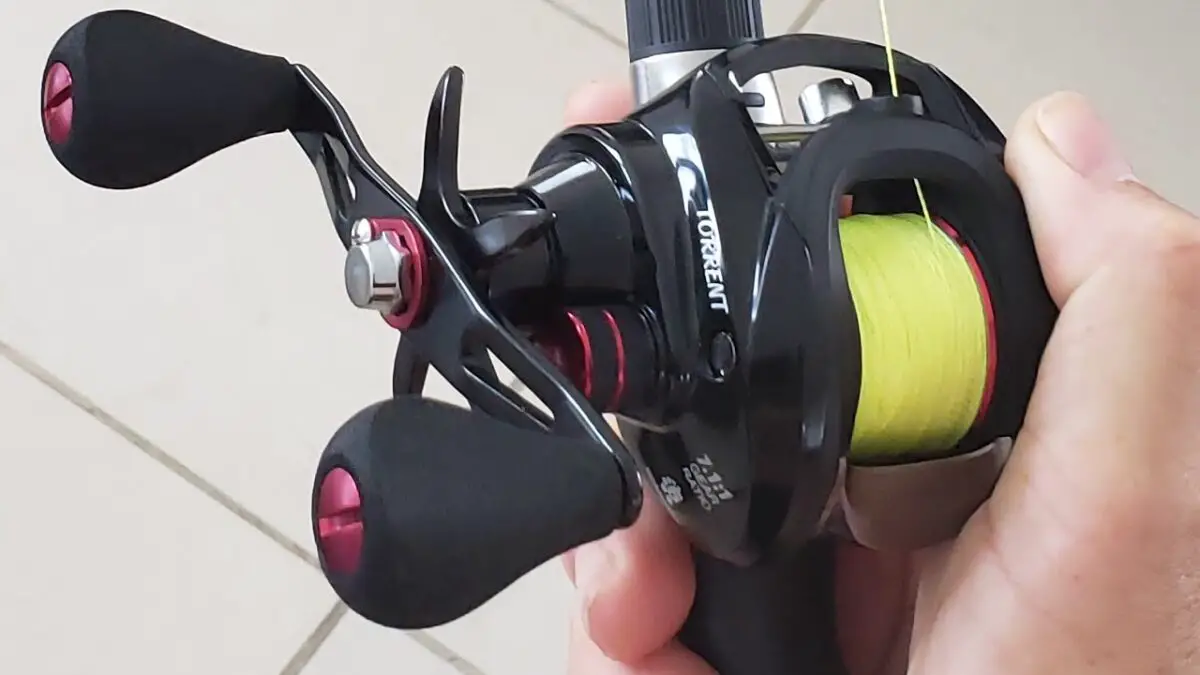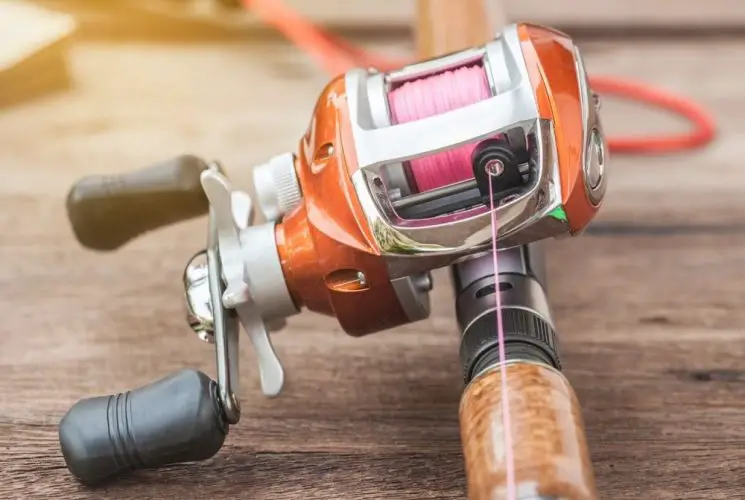Absolutely, you can use braided line on a baitcaster. Many experienced anglers swear by it. The braided line offers several benefits like longer casting distance, higher line capacity, and superior strength, which can greatly enhance your fishing experience.

Table of Contents
When to Choose Braid for Baitcasters
As an avid angler, I’ve had many experiences using various fishing lines on my baitcasting reels. And I’ve found several situations where choosing a braided line can offer significant advantages.
For instance, braided lines are a reliable choice if you’re going for larger fish species or fishing in heavy cover because of their exceptional strength. Braided lines are also great when you need a longer casting distance or to feel the slightest nibble, thanks to its low stretch properties.
Braided line is also ideal when spooling a baitcaster with a smaller line capacity. Thanks to its thin diameter, you can fit more braided line on your spool. This gives you the ability to cast further and fight stronger fish.
What is a Braid Ready Spool?
A braid ready spool is a feature found on some baitcasting reels, explicitly designed for use with braided fishing lines. These spools typically have a rubber or textured lining that prevents the braid from slipping on the spool, a common problem when using braided line on a standard spool.
In my years of using baitcasting reels, I’ve found braid ready spools to be incredibly useful. They provide solid engagement with the line and ensure smooth casting and retrieval, which is critical when battling those elusive trophy fish.

How Much Mono Backing to Use for Braid?
When I first started using braided lines, I made a mistake many anglers make – directly spooled the braided line onto my baitcaster. I soon realized this caused the line to slip around the spool, affecting my casts.
That’s when I discovered the importance of using a monofilament or fluorocarbon backing. I recommend using enough mono backing to cover the base of the spool, usually around 50 yards. This provides a non-slip base for the braided line and improves the efficiency of casting and reeling.

Difference Between Mono and Braid Line
From my years of fishing and experience using different fishing lines, I can affirm that each type, whether monofilament or braided, comes with its distinct set of advantages and potential drawbacks. Your choice often depends on your specific fishing situation. To help you understand, I’ll delve deeper into the significant differences between monofilament and braided lines for baitcasters.
Line Capacity
One of the first differences between these two types of lines is their capacities on a baitcasting reel. Due to its thinner diameter, braided line tends to occupy less space on your reel than monofilament line of the same strength. This translates into being able to spool more braided line onto your baitcaster, thus expanding its line capacity.
The enhanced line capacity allows you to cast further, reaching those distant hotspots that are often beyond the range of a monofilament line. It lets you cast further and provides an edge when you hook into larger, more robust fish that love to run and test the limits of your line capacity.
I have created a calculator to convert between mono and braid fishing line diameters and strength so you can compare different line capacities.
Line Strength
Another major point of comparison is line strength. In my fishing adventures, I’ve often found that braided lines offer greater strength than monofilament lines of the same diameter. This increased strength is due to the unique braiding process, combining several strands into one, resulting in a line that can handle heavier loads.
In practical terms, this means that you can use a thinner braid to achieve the same, if not higher, strength as a thicker mono line. The reduced line thickness further increases your line capacity, allowing you to hold more of this stronger, thinner line on your baitcasting reel.
Abrasion Resistance
Despite the above points seemingly favoring braided lines, monofilament lines aren’t without their merits. When it comes to abrasion resistance, mono lines generally have the edge. They are more capable of withstanding damage from rubbing against rocks, underwater structures, or the rough mouth of an aggressive fish.
In my years of fishing, I’ve lost many fish due to the braid cutting on sharp rocks or other underwater hazards. However, it’s worth noting that advancements in braided line manufacturing are steadily enhancing their abrasion resistance. High-quality braided lines are now far more resilient and can rival some mono lines in this regard.
Line Color
Lastly, the color of your fishing line can play a more significant role than you might initially think. Braided lines often come in high-visibility colors like yellow, white, or neon green. This can be an advantage if you’re line-watching – a technique where you watch your line for subtle movements indicating a bite.
On the other hand, mono lines usually come in low-visibility colors like clear or blue, which makes them less noticeable to fish in clear water conditions. Some anglers, including myself, often prefer these less conspicuous lines, particularly when targeting line-shy fish species.
Ultimately, choosing between a mono and braided line for your baitcaster depends on your specific needs and circumstances. Remember, a successful fishing experience comes from understanding your tools and using them effectively in each unique situation.
Braid vs Mono Line Capacity
I have also created a calculator to help convert between PE, mono, and braid diameters for line capacity.
| Pound Test | Mono Line Capacity | Braid Line Capacity |
|---|---|---|
| 5 lb | 175 yds | 350 yds |
| 10 lb | 150 yds | 300 yds |
| 15 lb | 135 yds | 285 yds |
| 20 lb | 125 yds | 275 yds |
| 25 lb | 115 yds | 260 yds |
| 30 lb | 100 yds | 250 yds |
| 35 lb | 85 yds | 240 yds |
| 40 lb | 75 yds | 230 yds |
Conclusion
In conclusion, yes, you can definitely use braided line on a baitcaster. And in many cases, I recommend it. It offers several benefits over monofilament and fluorocarbon lines, such as longer casting distance, increased line capacity, and stronger line strength.
However, remember that each type of line has its own advantages, and the best choice often depends on your fishing situation. Always consider the species you’re targeting, location, and preference before spooling your baitcasting reel.

